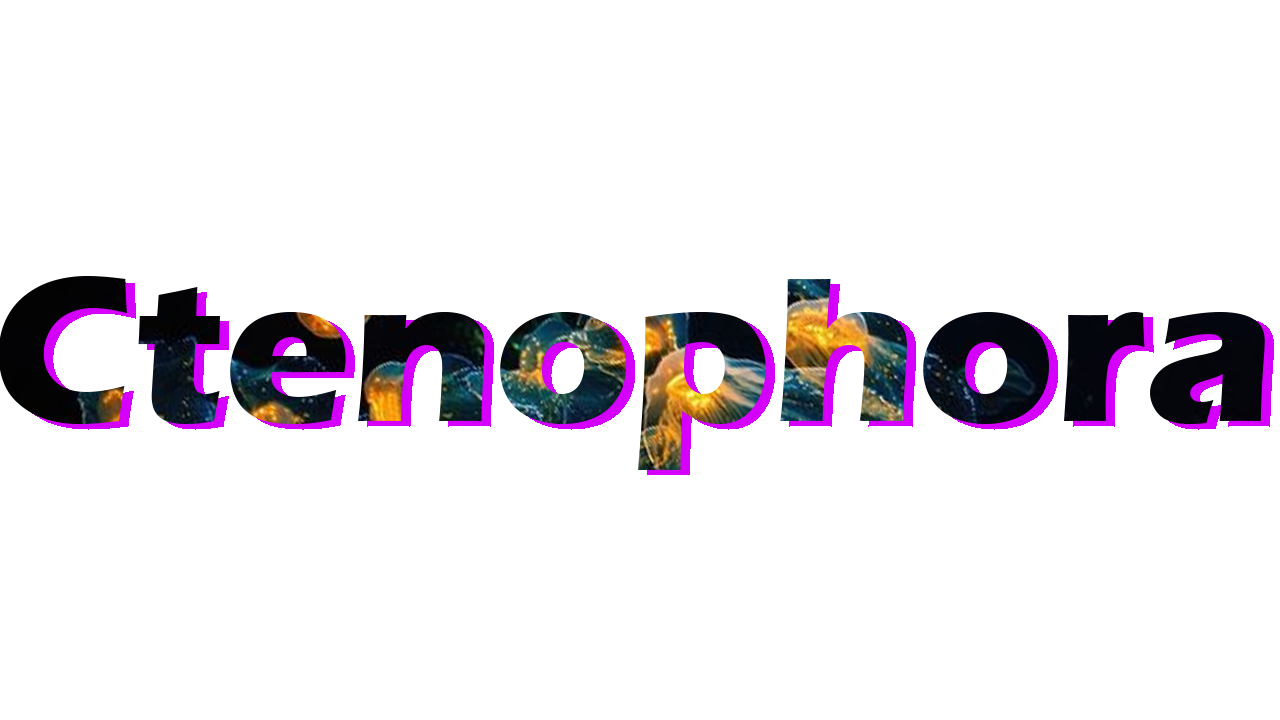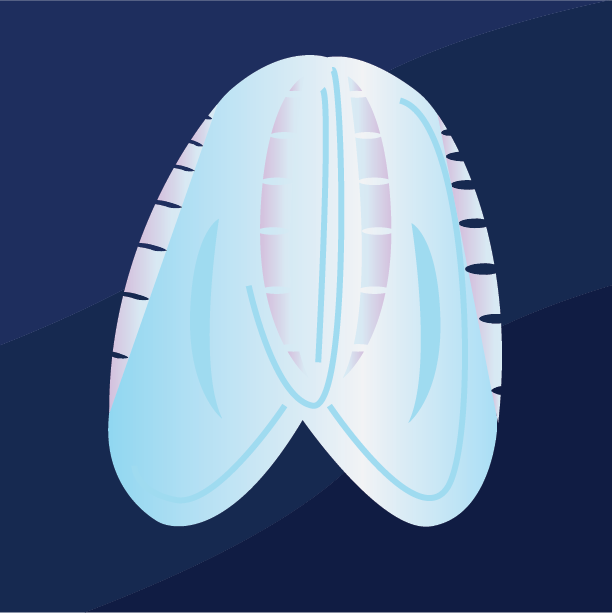Ctenophora is a phylum of the kingdom Animala. The name translates to "comb-bearer," and they swim around using comb-like plates. These plates are made of cilia, which are small hair-like body parts that serve multiple fuctions such as developing the heart and moving mucus. Many ctenophora have proteins called photoproteins that produce light, making them bioluminsescent. Some comb jellies have 2 tentacles that can stick onto prey so they can capture and eat them. They can use the tentacles to bring organisms into their mouths, which are located at the bottom of the comb jelly. Although they do have these tentacles, unlike cnidarians, they do not have stinging cells, so comb jellies cannot sting. This means that comb jellies are harmless to humans. Reproduction happens year-round, but only during night time. Ctenophora can reproduce asexually by budding, which is when they have a small growth on their bodies that detaches when mature enough to grow into another organism. Some predators and prey of common echinoderms are:
- Jellyfish (predators)
- Fish (predators)
- Sea Turtles (predators)
- Other Comb Jellies (predators)
- Crustaceans (predators)
- Humans (predators)
- Fish Larvae (prey)
- Other Comb Jellies (prey)
- Zooplankton (prey)
- Small Fish (prey)
- Small Jellyfish (prey)
Ctenophora species and classes:
- Arctic Comb Jelly (Tentaculata)
- Sea Gooseberry (Tentaculata)
- Mnemiopsis (Tentaculata)
- Lampocteis (Tentaculata)
- Beroe Ovata (Nuda)
- Common Northern Comb Jelly (Tentaculata)
- Haeckelia Beehleri (Tentaculata)
- Beroe Abyssicola (Nuda)
- Bolinopsis Vitrea (Tentaculata)
- Velamen Parallelum (Tentaculata)
- Pleurobrachia Bachei (Tentaculata)
- Euplokamis Dunlapae (Tentaculata)
- Pleurobrachia Pileus (Tentaculata)
- Venus Girdle (Tentaculata)
- Bathocyroe Fosteri (Tentaculata)
- Minictena (Tentaculata)
- Bathyctena Chuni (Tentaculata)
- Thalassocalyce Inconstans (Tentaculata)
- Ocyropsis Crystallina (Tentaculata)
- Vampyroctena Delmarvensis (Tentaculata)
- Eurhamphaea Vexilligera (Tentaculata)
- Lampea Pancerina (Tentaculata)
- Hormiphora Plumosa (Tentaculata)


